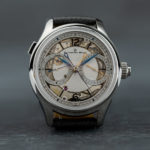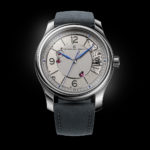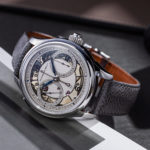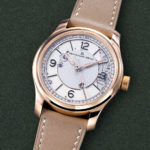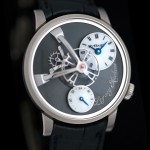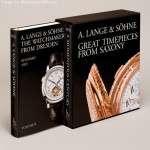Hands On: Petermann Bédat’s Reference 1825 Does More with Less
Elegantly concise and top quality.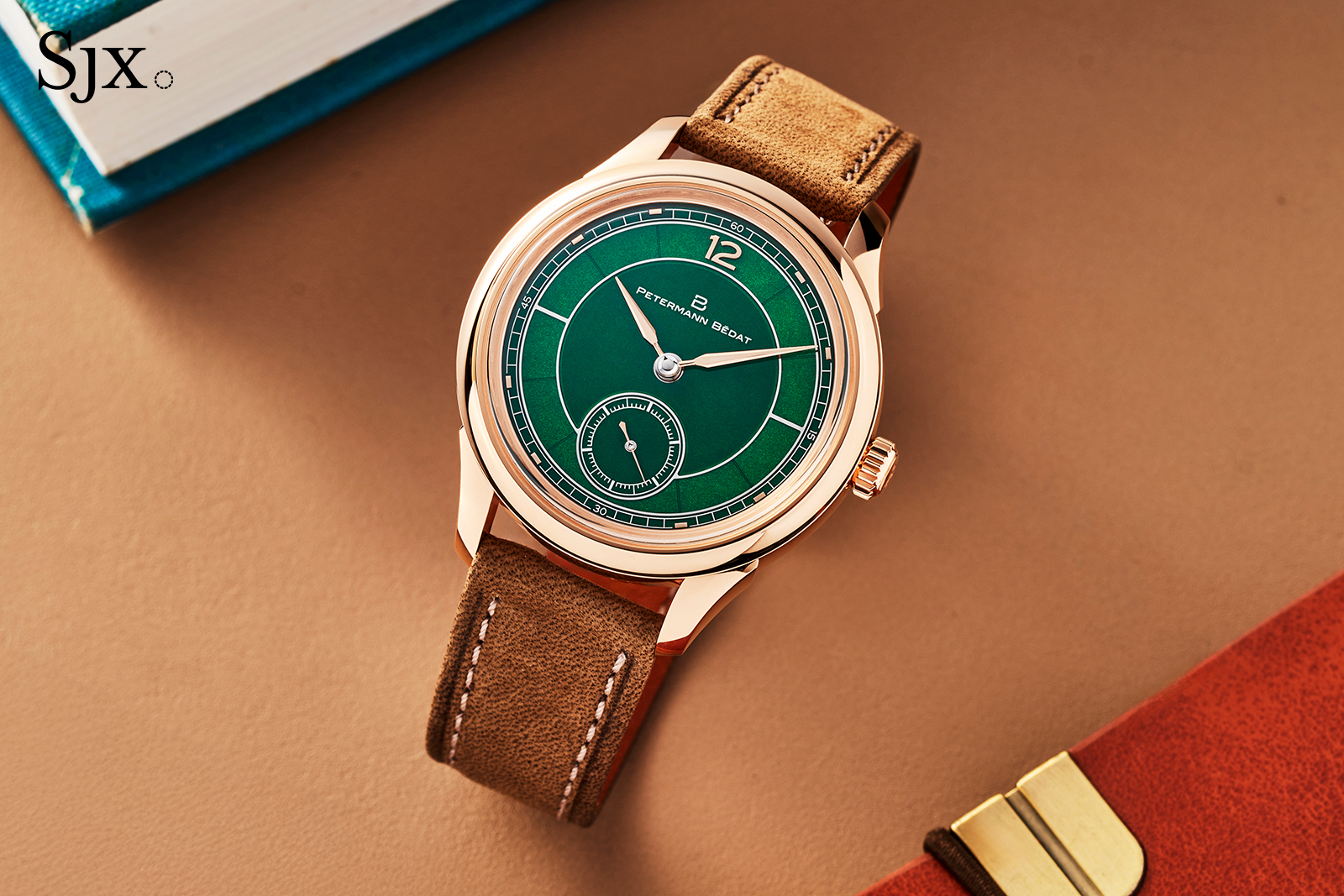
Petermann Bédat has just unveiled its third model, the Reference 1825, which arrives two years after the Reference 2941 Split-Seconds Chronograph. The brand’s simplest watch to date, the 1825 is three hands but far from basic. In fact, the 1825 illustrates the cliche that less is more.
Founded by duo Gaël Petermann and Florian Bédat, the brand departs from current fashion with the 1825, which has a restrained aesthetic front and back, though the movement incorporates enough subtle flourishes to make it distinctive and distinguished. The proliferation of open-dial time-only watches with overwrought finishing makes the quiet presence of the 1825 stand out.
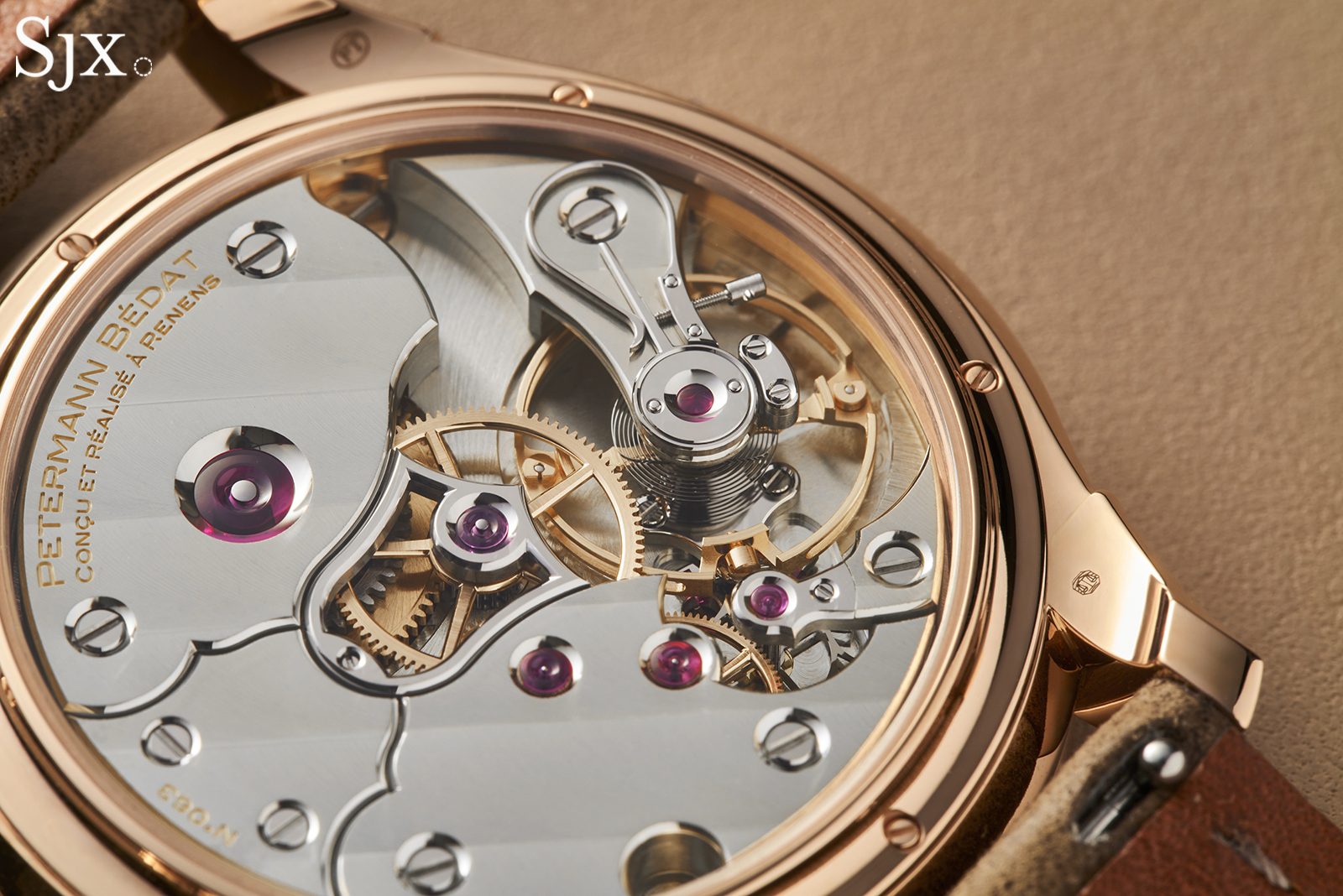
The cal. 233 of the 1825
Initial thoughts
The recent enthusiasm for independent watchmaking has tended to focus on time-only watches of a specific sort, with open dials, exposed movements, and lots of finishing techniques. Naturally, independent watchmakers and brands have delivered in response to that demand.
In comparison, the 1825 is old school in style and form, almost plain in fact, but I like it precisely because of that. The 1825 is appealing on two levels. One is tangible – it is an appealing watch on the wrist and clearly executed to a high level. The other is philosophical – I applaud Petermann Bédat for not going with current fads.
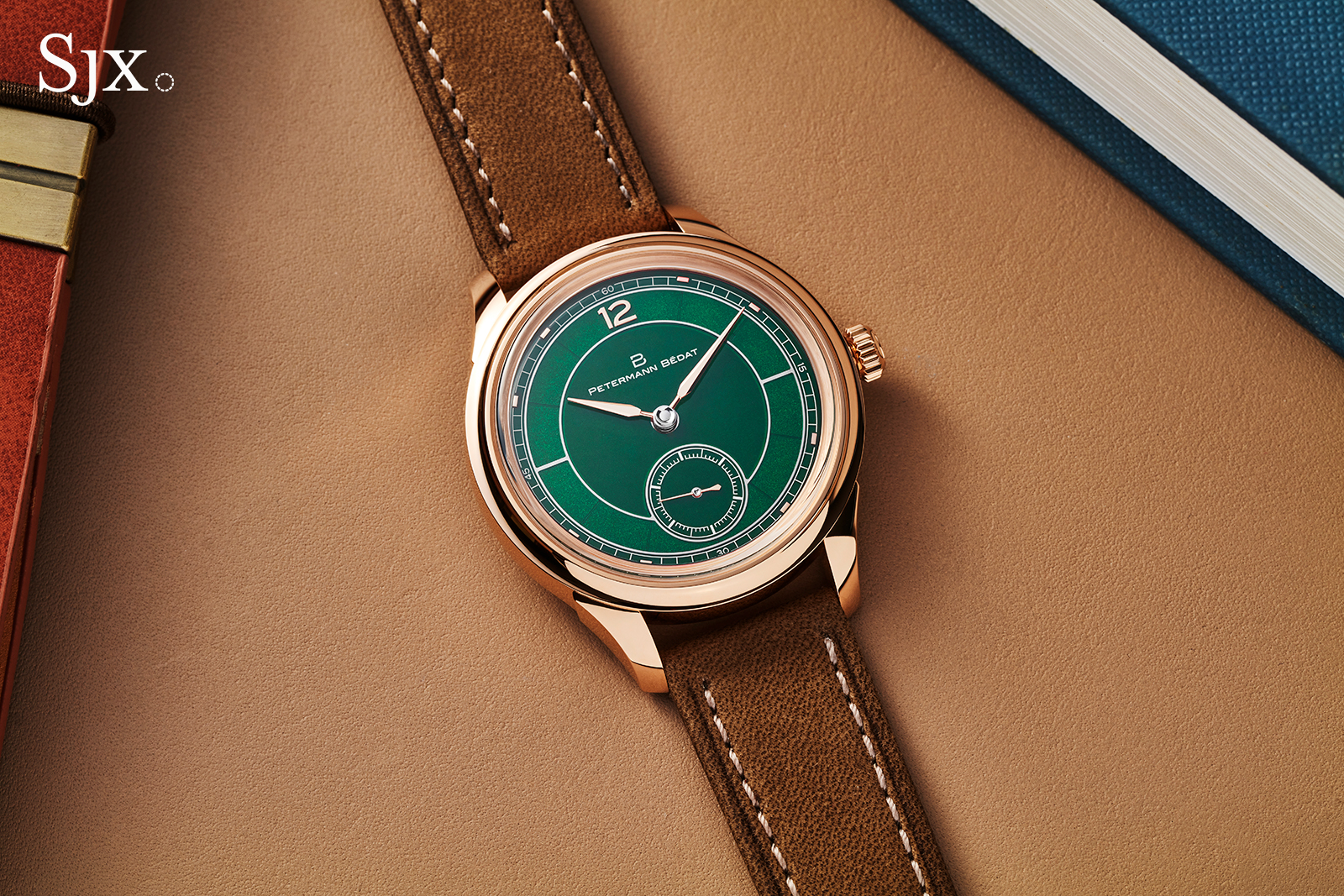
The 1825 isn’t imaginative or radical, it is simply a simple watch of high quality that feels like it was conceived and executed by sincere, competent watchmakers. All elements are done well and, importantly, feel original and lack the artifice that characterises some of the more recent indie debuts.
The dial is of the familiar “sector” type, but in flinqué and champlevé enamel – translucent enamel over a textured, relief base – of excellent quality. It’s produced by a well-known, reliable dial maker, so the quality is not surprising.
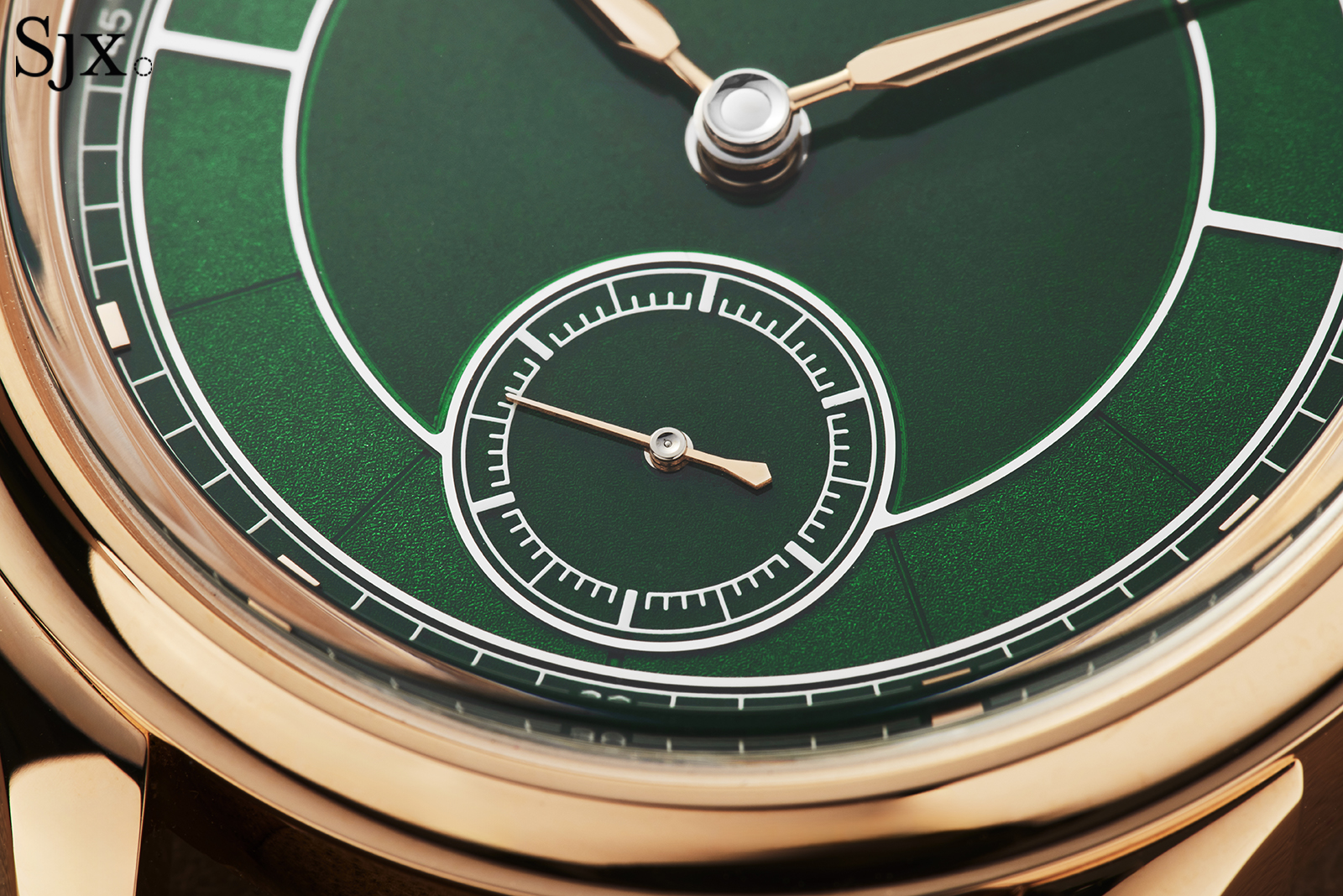
The dial style has minimal elaboration; the applied indices are a discreet extra, but overall the style is classic. If I were fortunate enough to buy one, I would ask for an entirely different dial design, simply as a matter of taste. I find the “sector” design too generic today since it has become so popular at every point of the price spectrum.
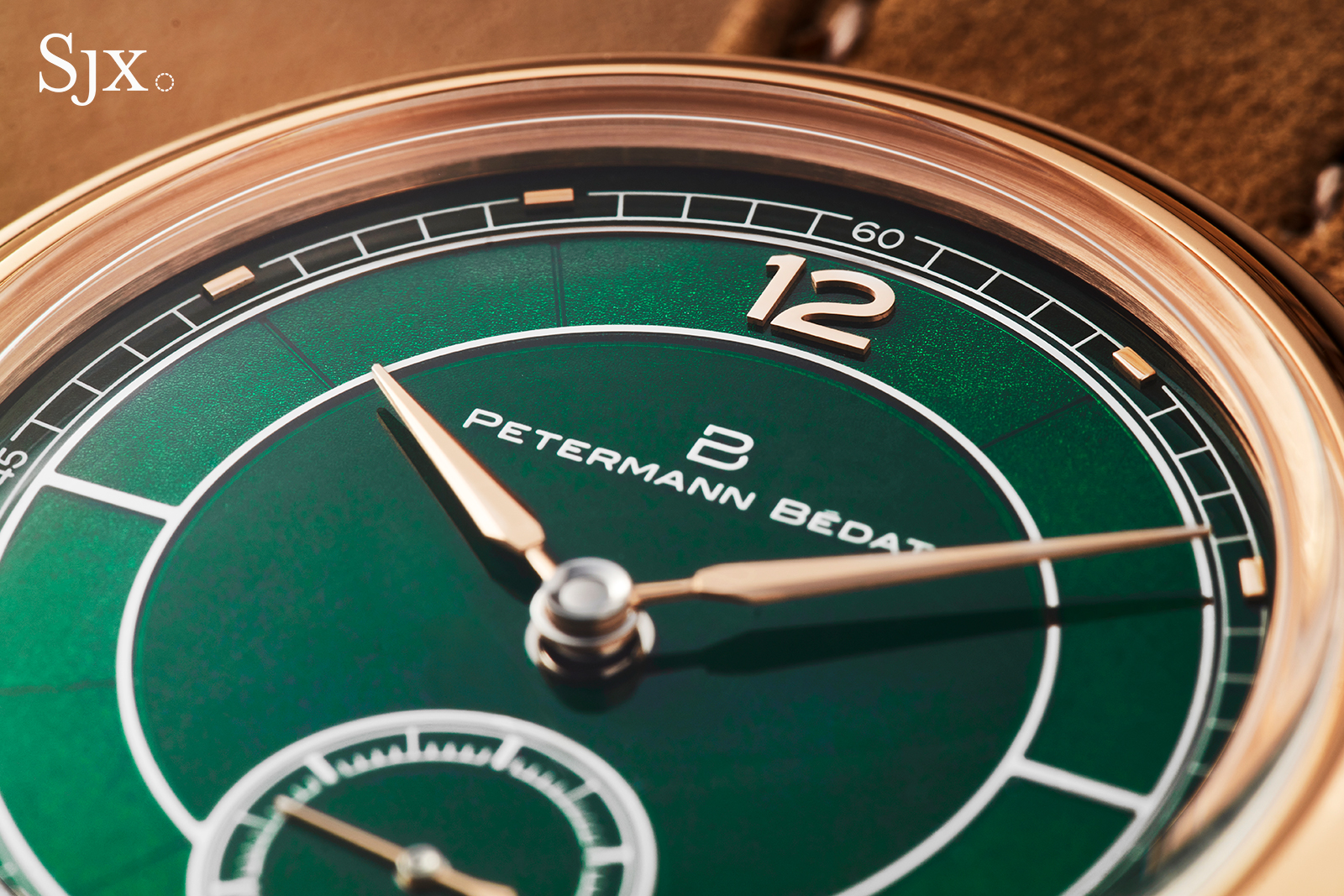
The case, on the other hand, takes after the 2941 split-seconds, so it has some interesting details in its form, though not so much that it’s unconventional; the case is still decidedly classical in style.
But the greatest appeal of the 1825 lies on the back. At first glance, the cal. 233 inside seems like yet another finely finished time only movement with little to make it special. But look at it for a while and the details emerge. These details give it tremendous appeal and also underline the good taste of the team at Petermann Bédat.
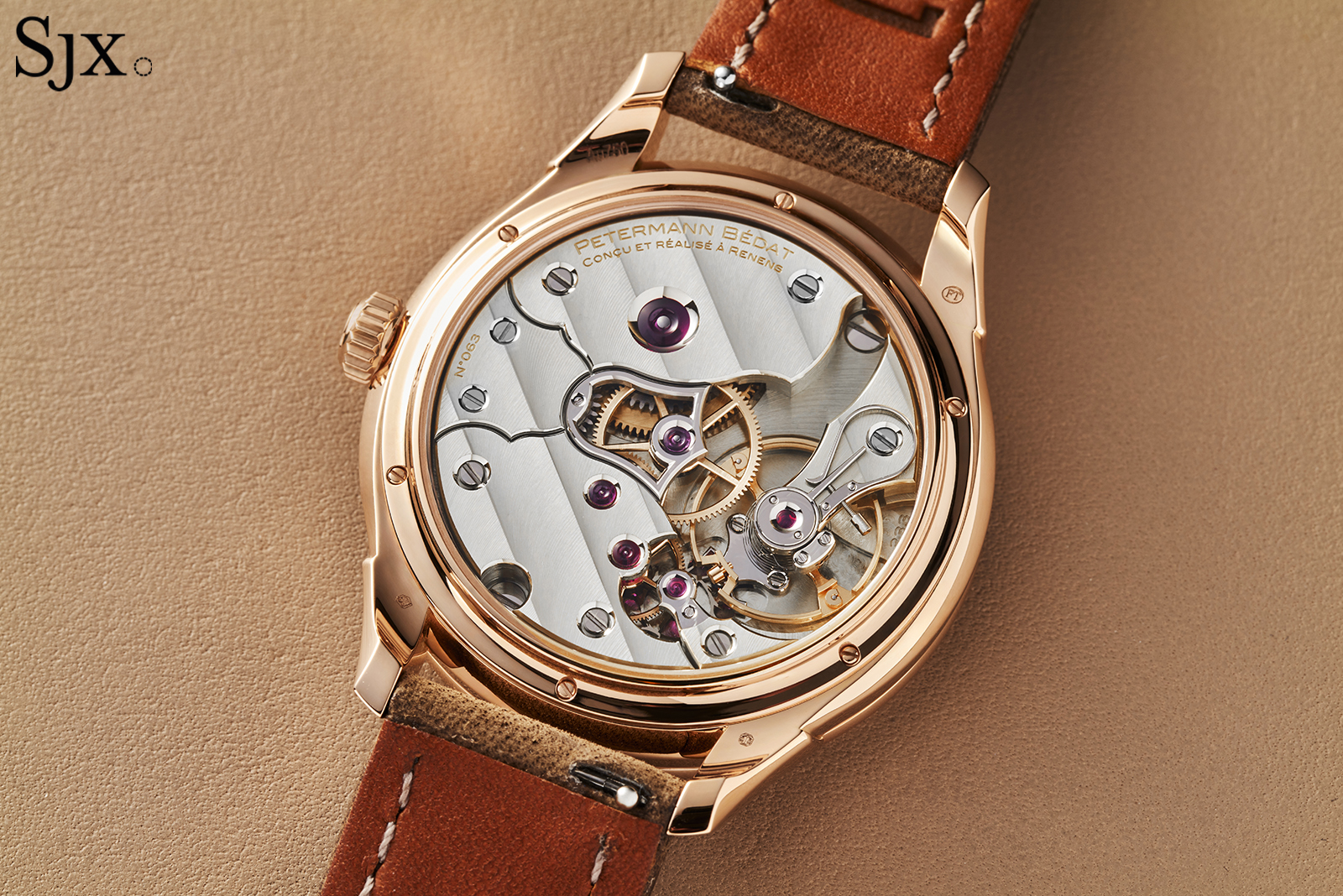
The bridges are carefully shaped with clean outlines, but also incorporate tasteful details. The bell-shaped bridge for the centre wheel and escape wheel cock are especially striking. Another plus is the fact that the calibre has no rounded, tubular bridges or cocks, which I find have become an overused element (plus the bell-shaped bridge is probably more difficult to decorate than a tubular bridge).
The 1825 falls squarely in the prevailing price range for other high-end time-only watches by independent watchmakers – CHF75,000 before taxes. It’s a lot for a time-only watch, but fair relative to the rest of the market; the cost reflects the overall state of the industry and strength of demand for such watches. But for me, the 1825 ranks higher, and is in fact amongst the best, amongst comparably priced three-hand watches with fancy finishing.
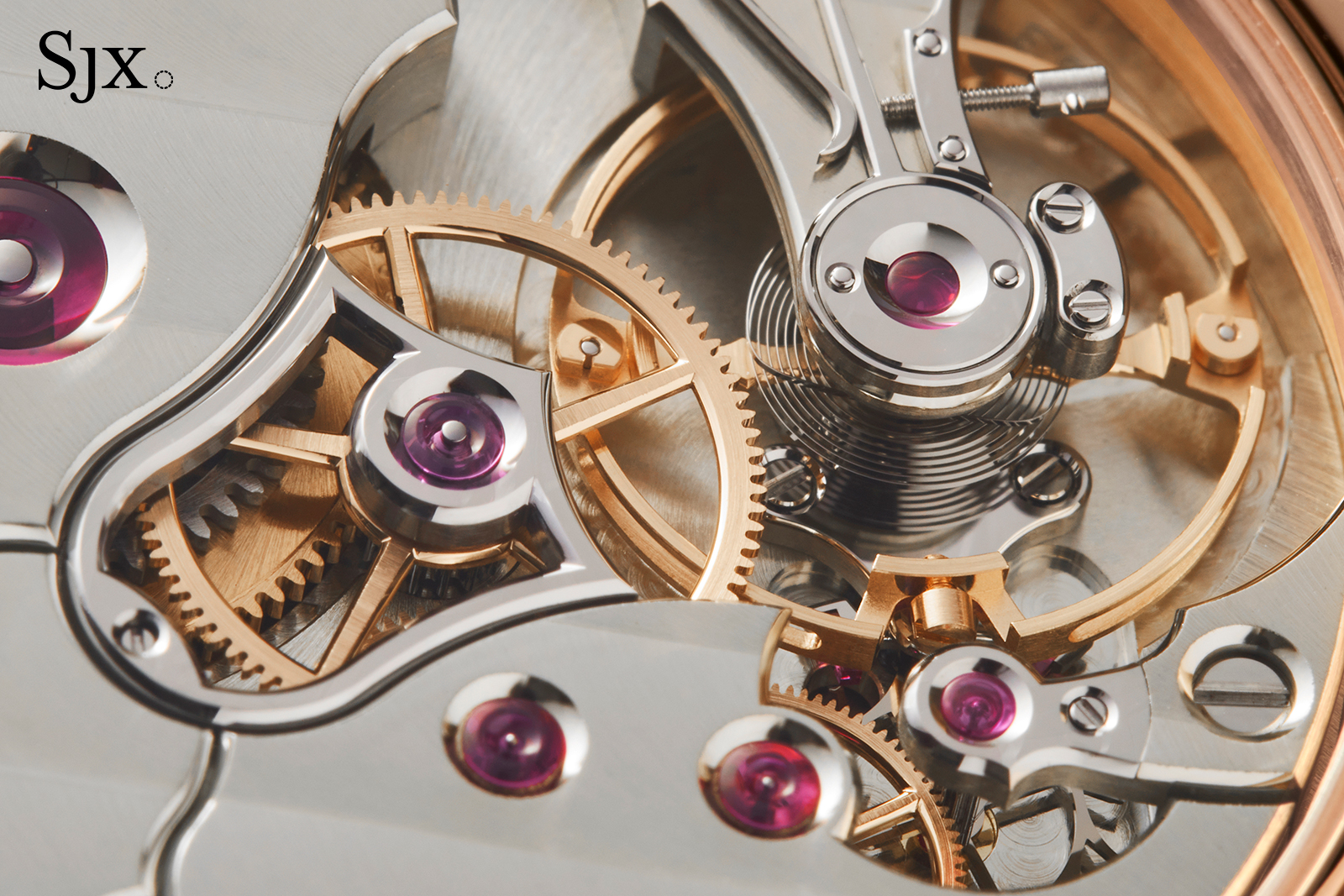
A fine foundation
According to the brand’s founders, Gaël and Florian, the 1825 is the start of a new family of watches, with the cal. 233 serving as the base for complications in the future. Both the watch and movement are certainly solid foundations to build on.
The 1825 is not a limited edition, though it will only be produced for four years starting in 2026 and ending in 2029. While only available in rose gold at launch, it will be iterated on in the near future, including with a white gold case.
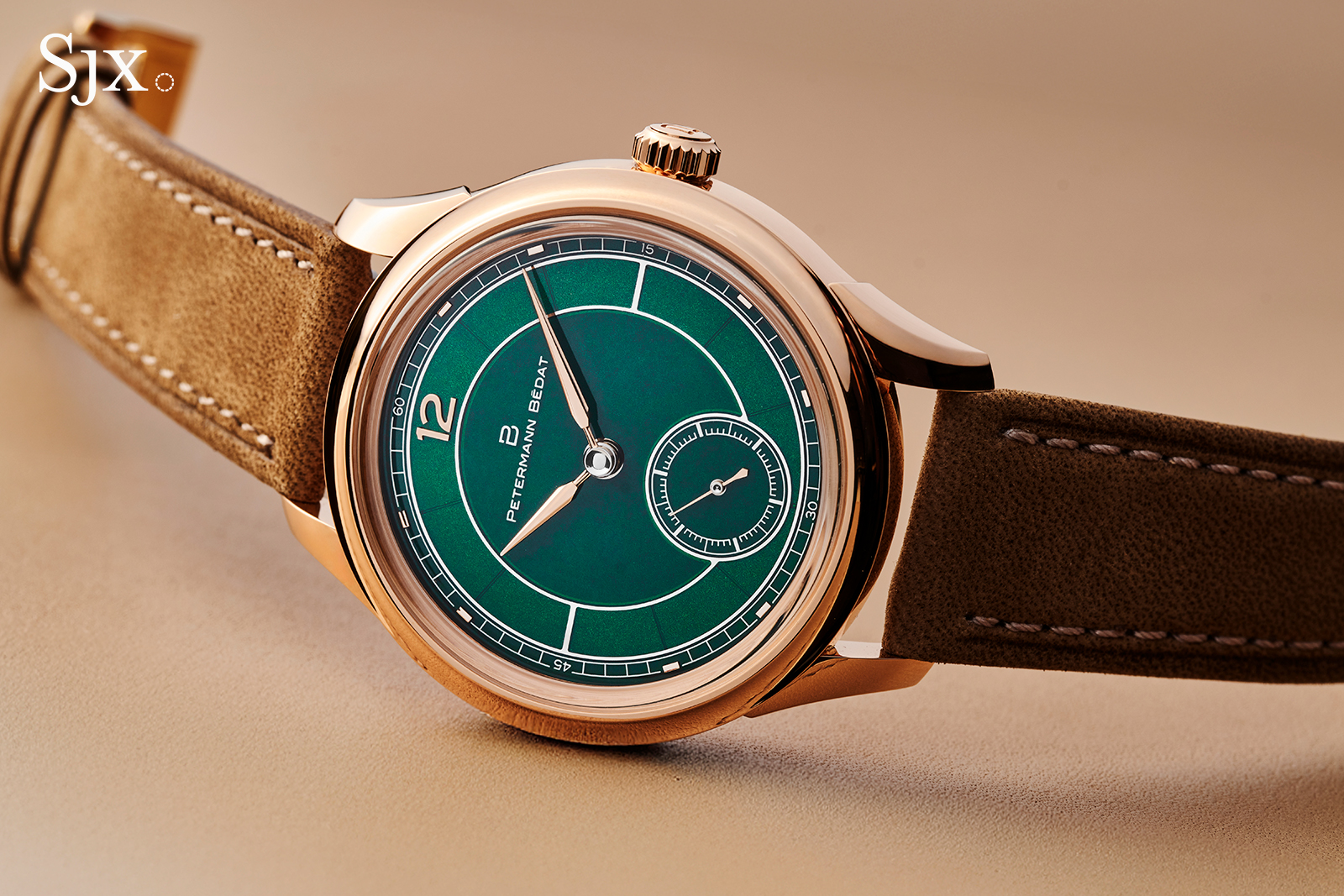
Though it’s not obvious at first, the case of the 1825 is evolved from the 2941 split-seconds chronograph. This is most evident in the case profile, which reveals the slightly flared lugs and concave bezel.
The case is made by a well-known supplier that, I presume, Petermann Bedat’s founders came to know of earlier in their careers; the quality is expectedly high. Though the lugs appear to be integral to the case, they are actually soldered into the case middle, which requires more work and skill than a one-piece case.
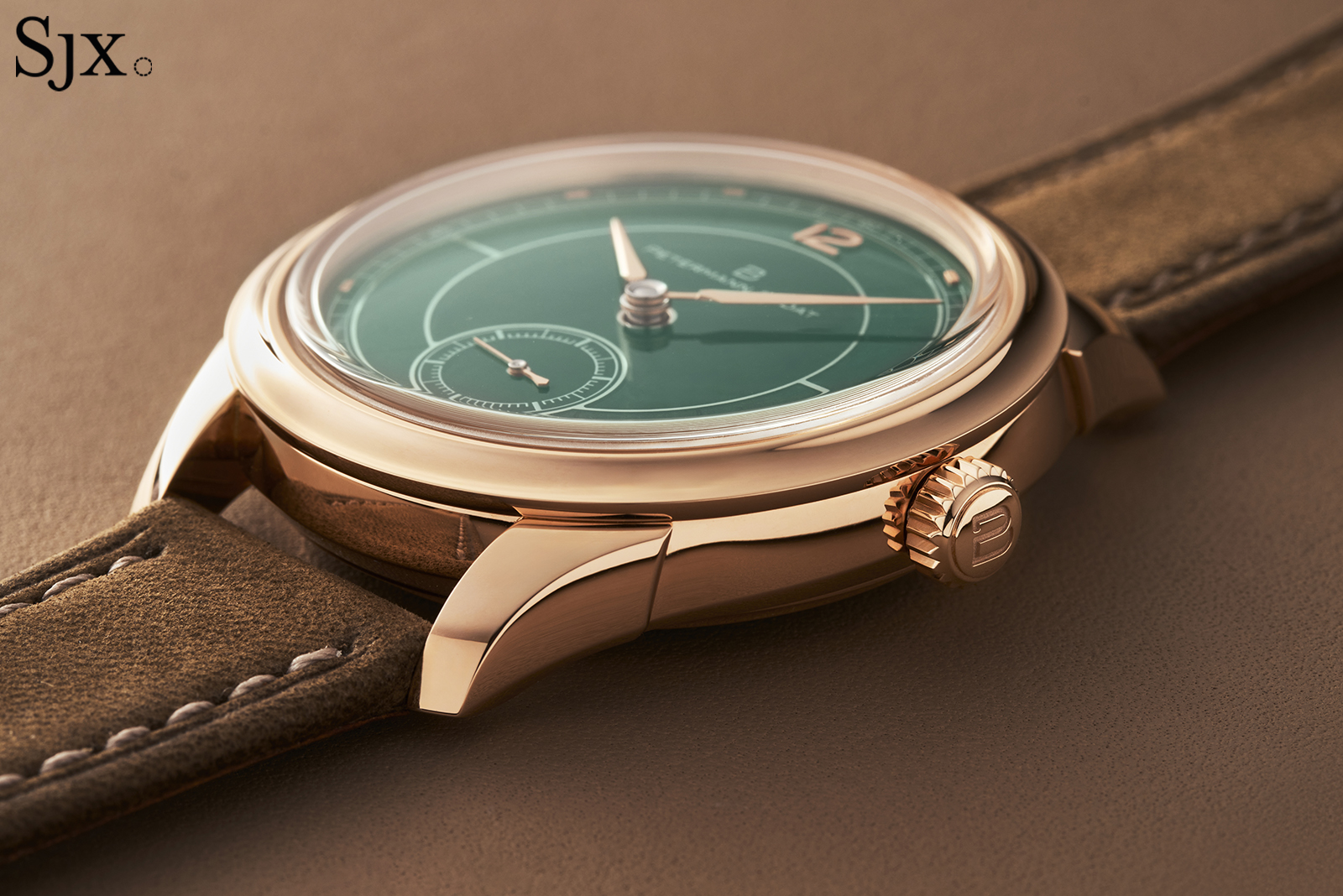
The concave bezel accentuates the domed crystal that sits high above the dial, making the case seem a little tall, although it is actually quite slim. In fact, the overall dimensions of the case are compact. The diameter of 38 mm and height of 10.15 mm fall within the optimal range for this type of watch.
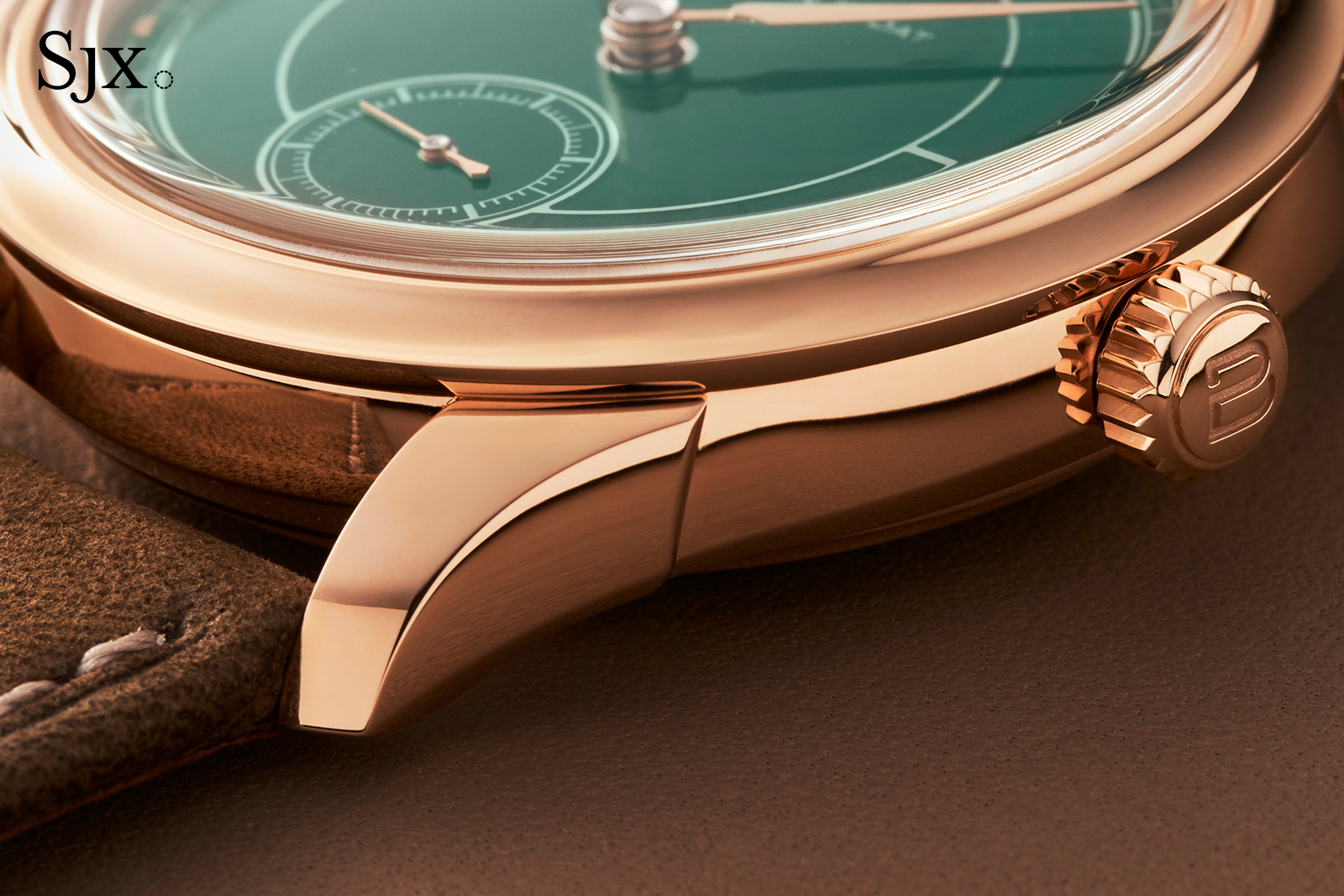
The 1825 is the first Petermann Bédat with an enamel dial, but the dial style is still loosely inspired by the sapphire dials of the preceding 1967 Deadbeat Seconds and 2941 chronograph. It’s still “sector” style, but more traditional than the sectioned sapphire dials found on the earlier models.
The dial matches the character of the watch well, though I personally would have opted for another design because I find this style too common. Given a free hand, I would keep the hands and change the dial design, perhaps even doing away with enamel in favour of another surface finish.
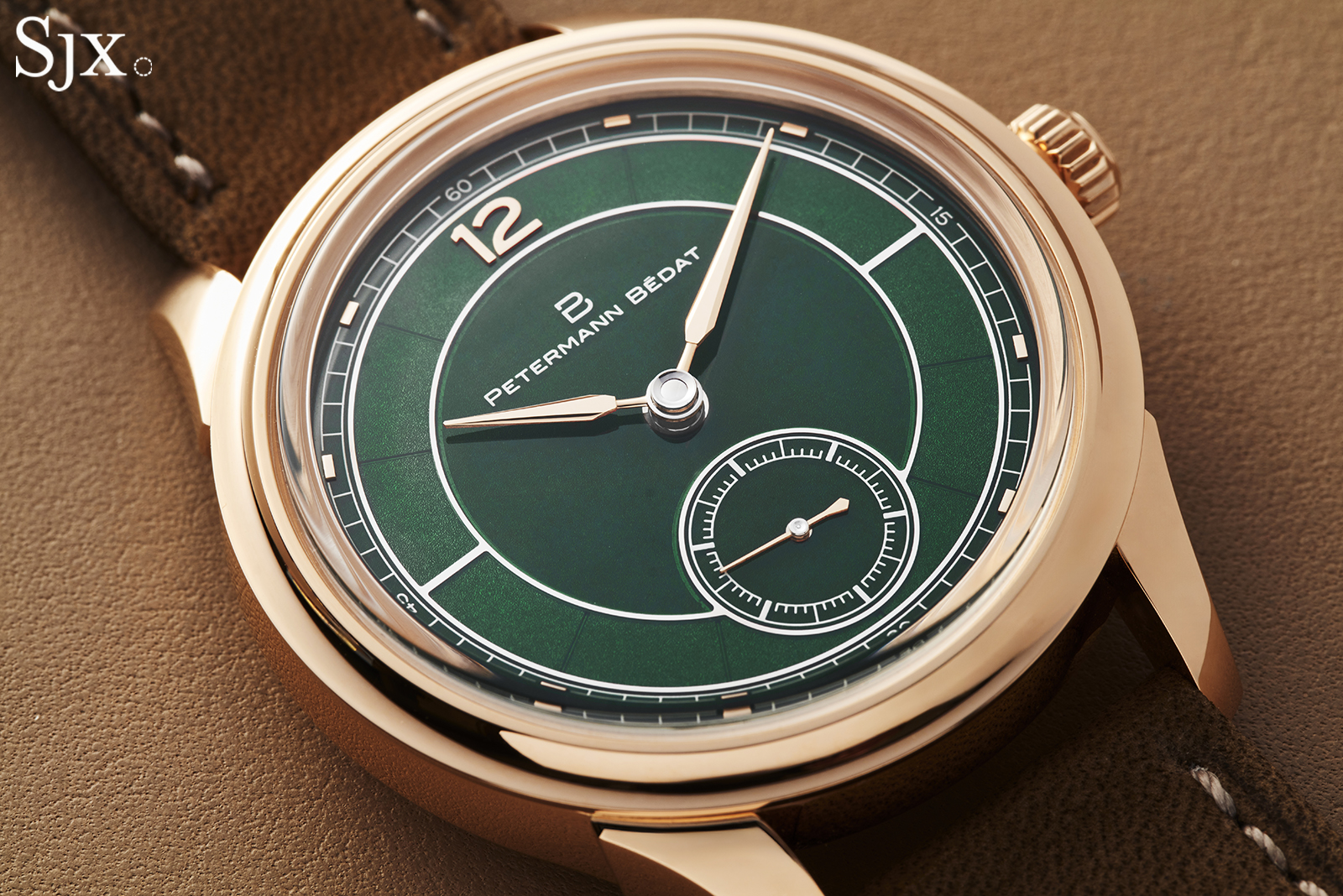
That said, the “sector” layout has been done with artful detailing that makes it a little more interesting. It’s finished in translucent green enamel over a solid gold base that’s been laser engraved to create a grained surface. The enamel is ever so slightly two tone, the green hue is darker on the innermost section and brighter on the chapter ring.
Made by a reputable dial and metiers d’art specialist, the dial lives up to expectations. The colour is vivid and appealing, while the enamel is glassy smooth and has few visible imperfections, which are typically more obvious in translucent finishes.
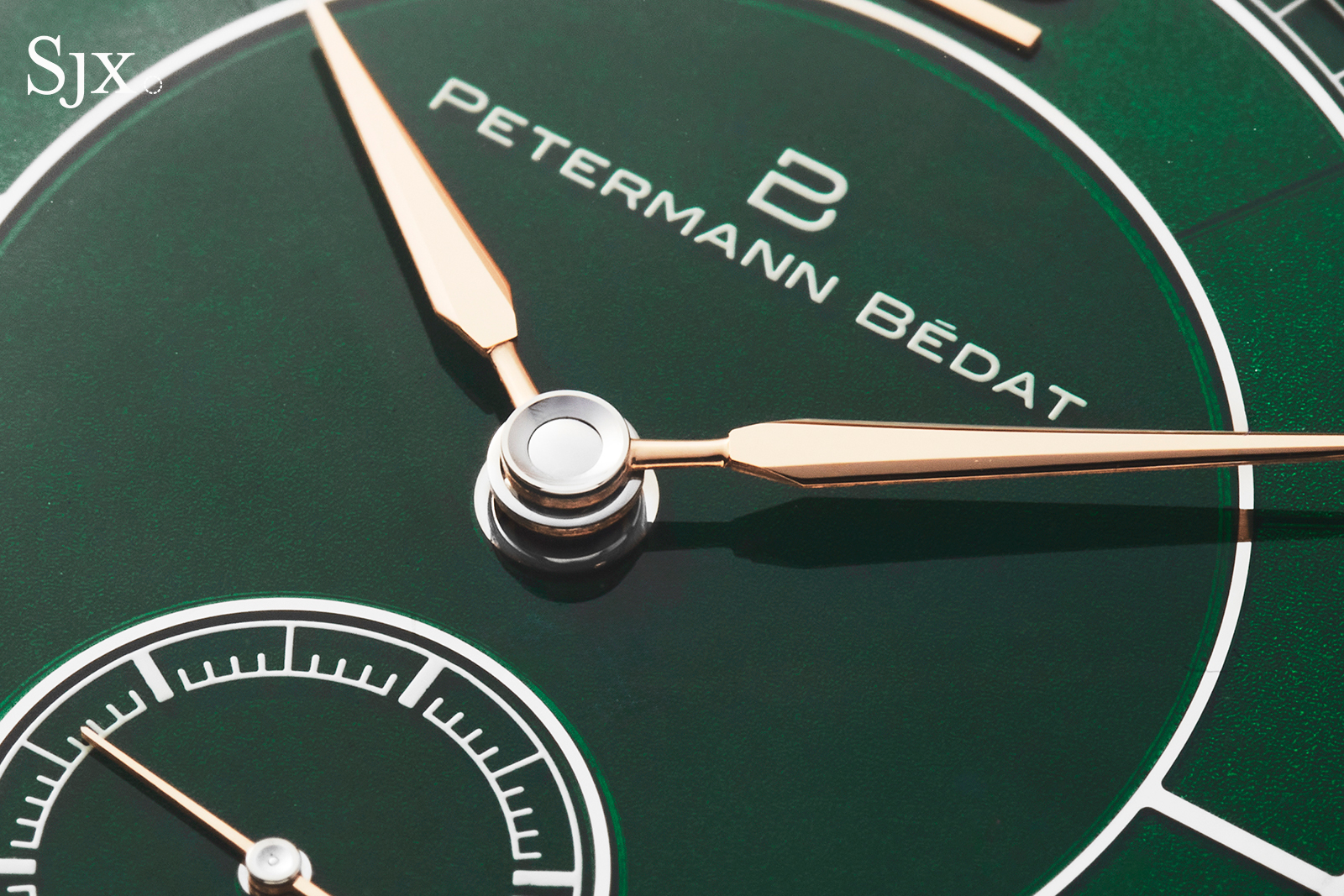
At certain angles, the green appears dark, almost opaque
Interestingly, the “sector” layout is actually part of the enamelling and not merely printing. The outer borders of the sector are raised and part of the dial base, also known as champleve, while the hour batons of the sector are engraved on the base and lie below the enamel. The “12” is applied, as are the tiny rectangles that serve as five-minute markers on the minute scale.
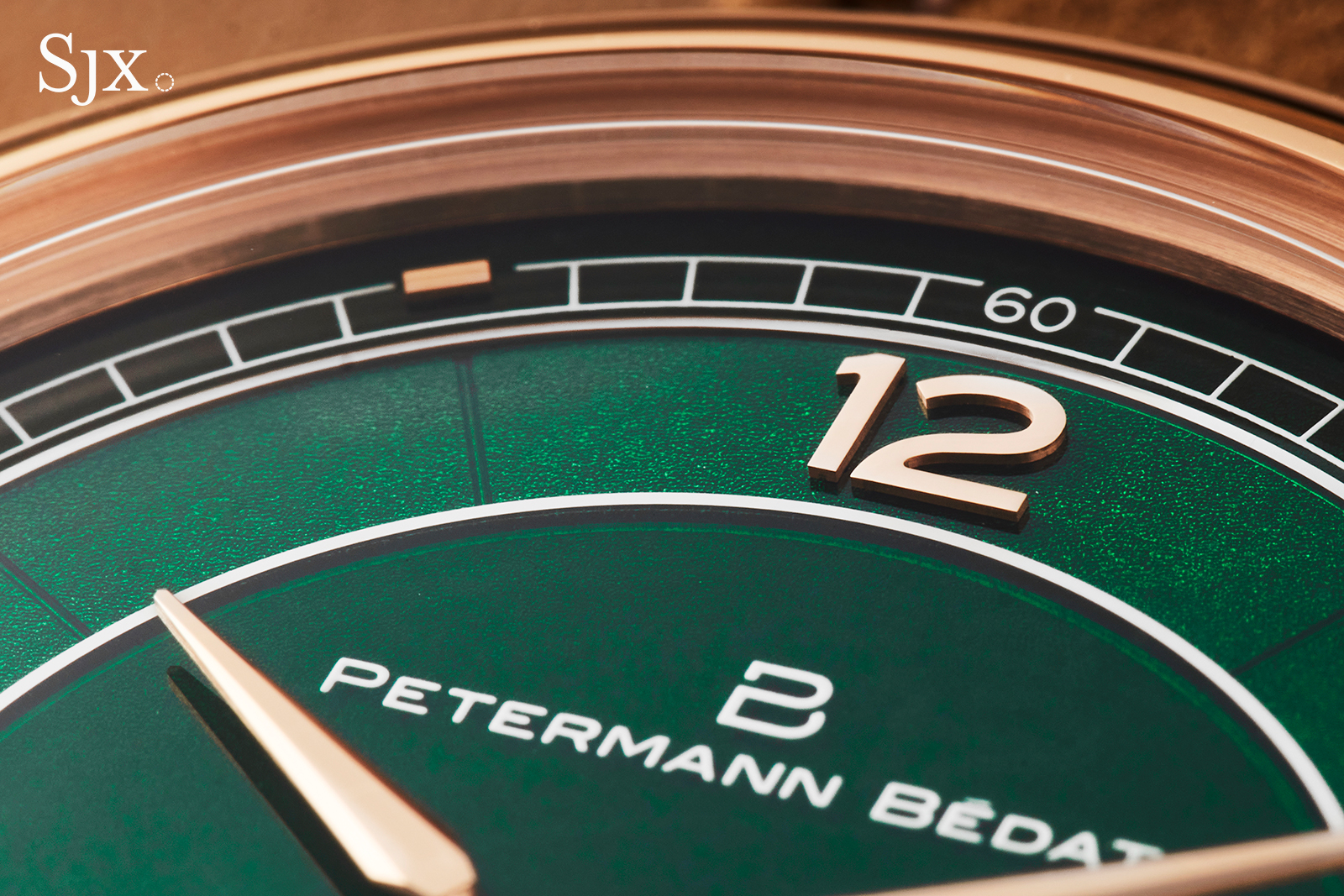
The hands are solid 18k rose gold to match the case, and finished by hand. They are functional in form, but finished well. The mirror polished and chamfered boss for each of the hands is especially fine.
While the hands are impressively made, most independents in this price segment have similarly high quality hands – clearly hands suppliers have gotten good at this – so the hands are not remarkable.
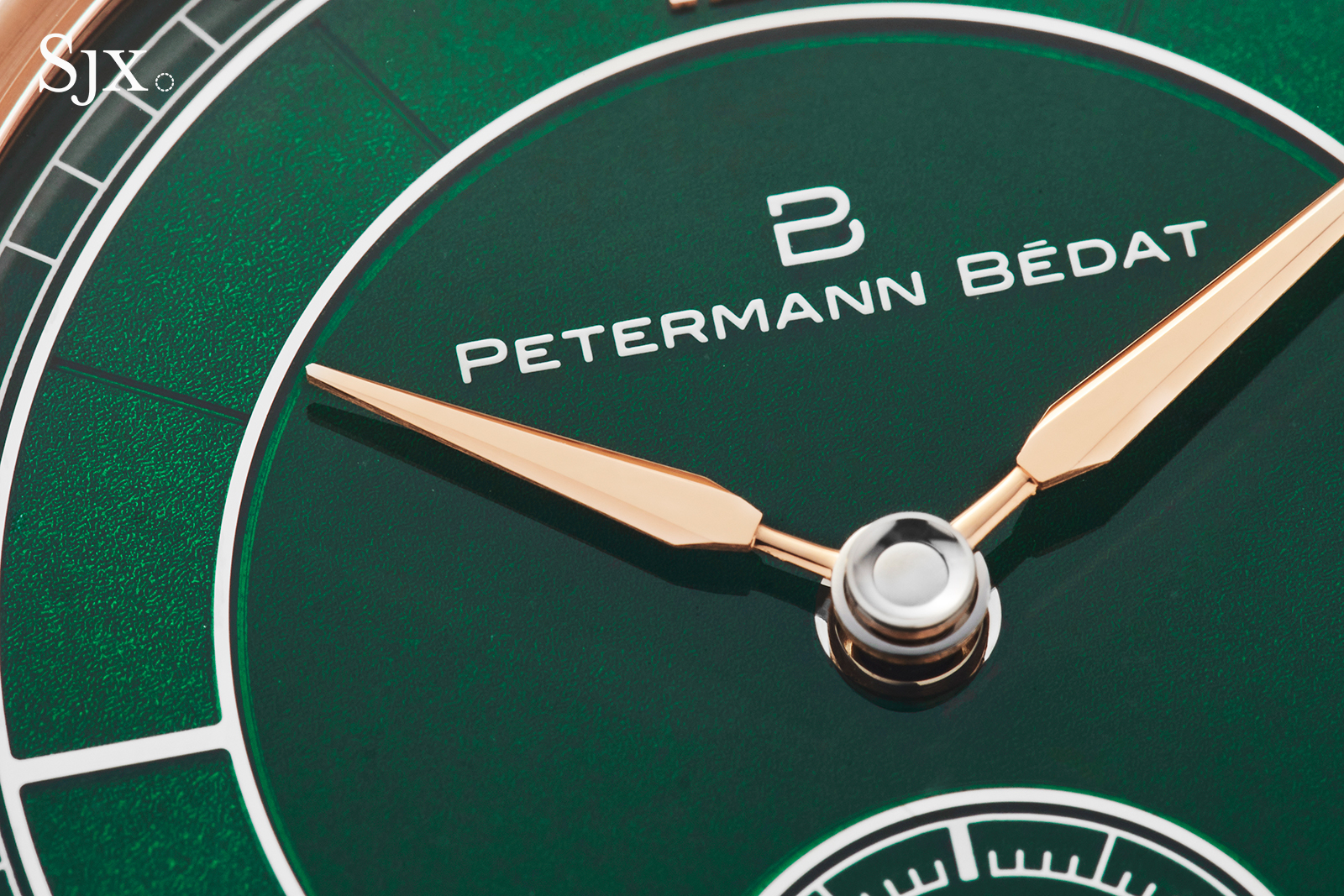
The movement, on the other hand, is special. The architecture is clearly vintage inspired, but elegantly original. It is also concise, yet subtly elaborate.
According to Petermann Bedat, the cal. 233 is a new construction, and not based on an existing movement (though the keyless works and escapement are shared with its earlier calibres). The starting point for the movement was historical pocket watch movements from the likes of Patek Philippe and Vacheron Constantin – plus a bit of inspiration from Philippe Dufour – yet the result feels distinctive.
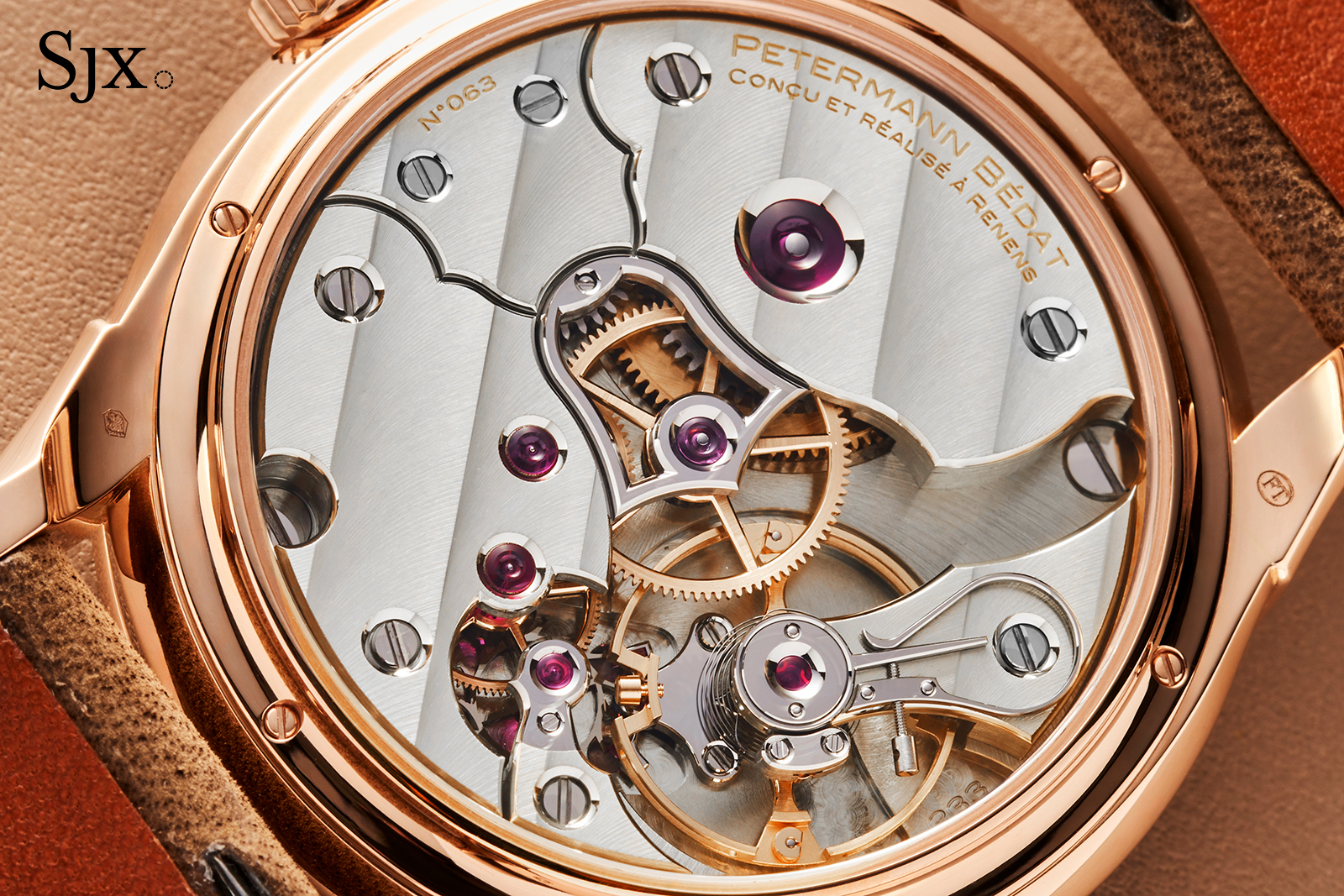
The movement is traditional in its approach, as expected for a watch like this. The balance wheel is large and slow beat, running at 18,000 beats per hour, while the hairspring is an overcoil. Neither of them is crucial for chronometry in modern watchmaking, but they complement the concept of the watch.
The balance wheel is free-sprung and of Petermann Bedat’s own design, making it a little more unusual than most conventional styles. It has two pairs of weights, with one pair situated in recesses. Because it is free-sprung, the swan’s neck regulator isn’t strictly necessary, but it is a pleasing extra that adds to the aesthetics of the movement.
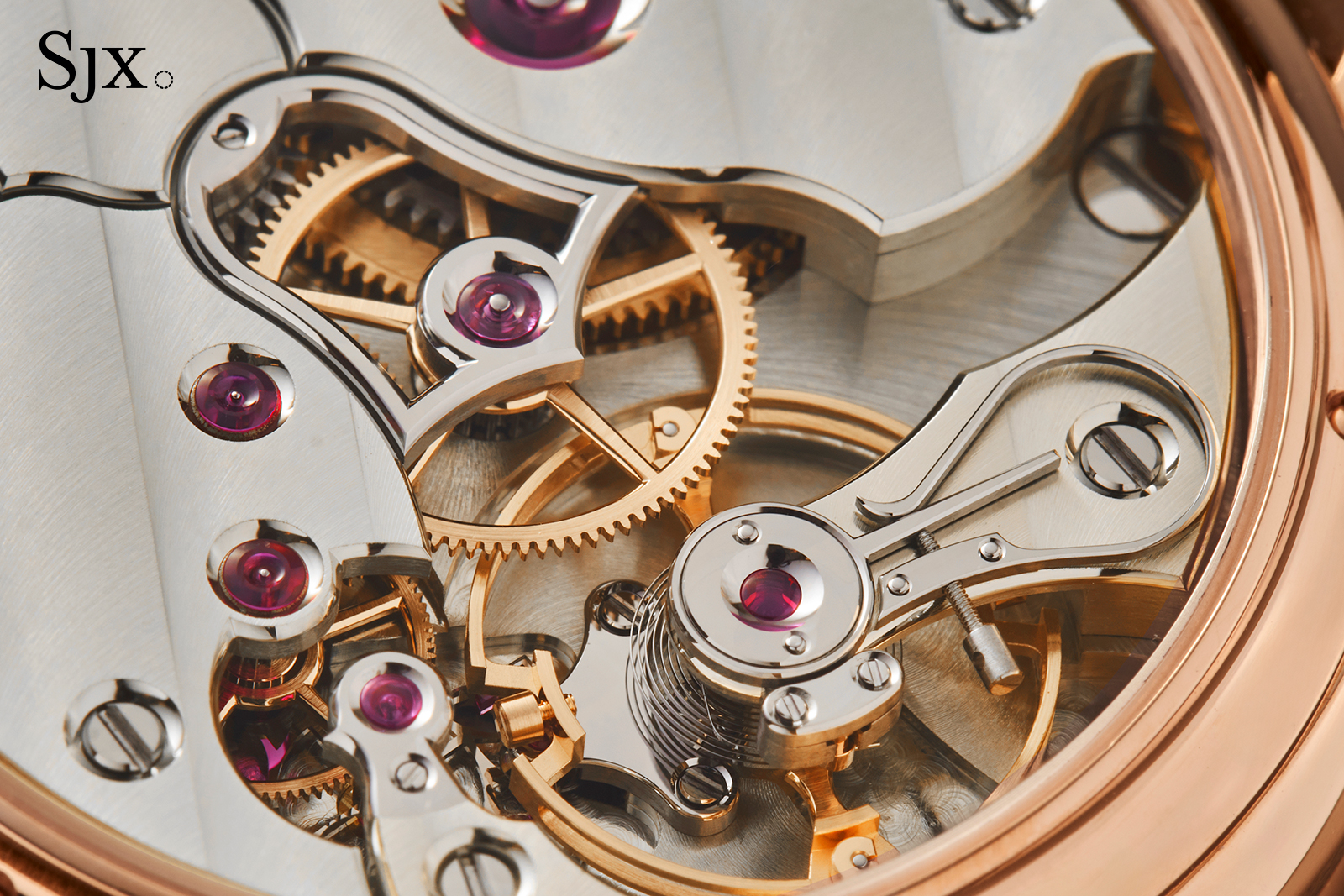
The most striking feature of the movement is the open-worked bridge that’s shaped like a bell. I quizzed Gaël on its origins, and he responded frankly: the bridge has no particular basis and was merely the result of iterating and brainstorming with the designer tapped for the task. This contrasts with the carefully curated stories that underpin many recent indie creations – I find it refreshing.
Gaël showed me the various design exercises for the movement, so it’s clear the bell-shaped bridge was the result of trial and error. It was certainly the right choice. It is classical, modern, original, and traditional, all at the same time.
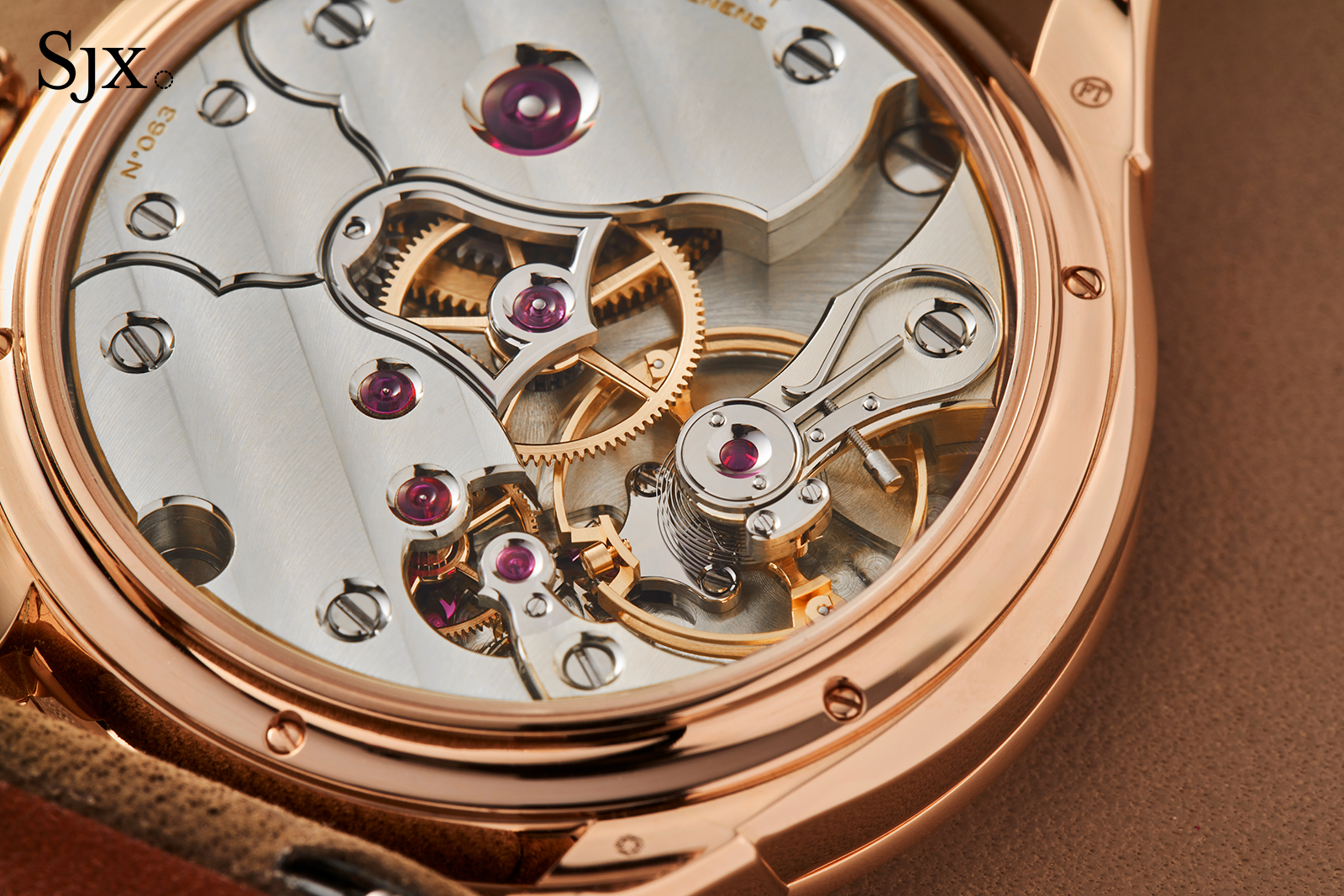
The bell-shaped bridge is the central element of the movement, with the rest of the bridges neatly arrayed around it. Though the movement seems simply laid out at a distance, each of the bridges has a sharply formed outline. The shapes seem to echo the form of the bell, most notably the keyless works bridge. Everything comes together well and the landscape is visually balanced.
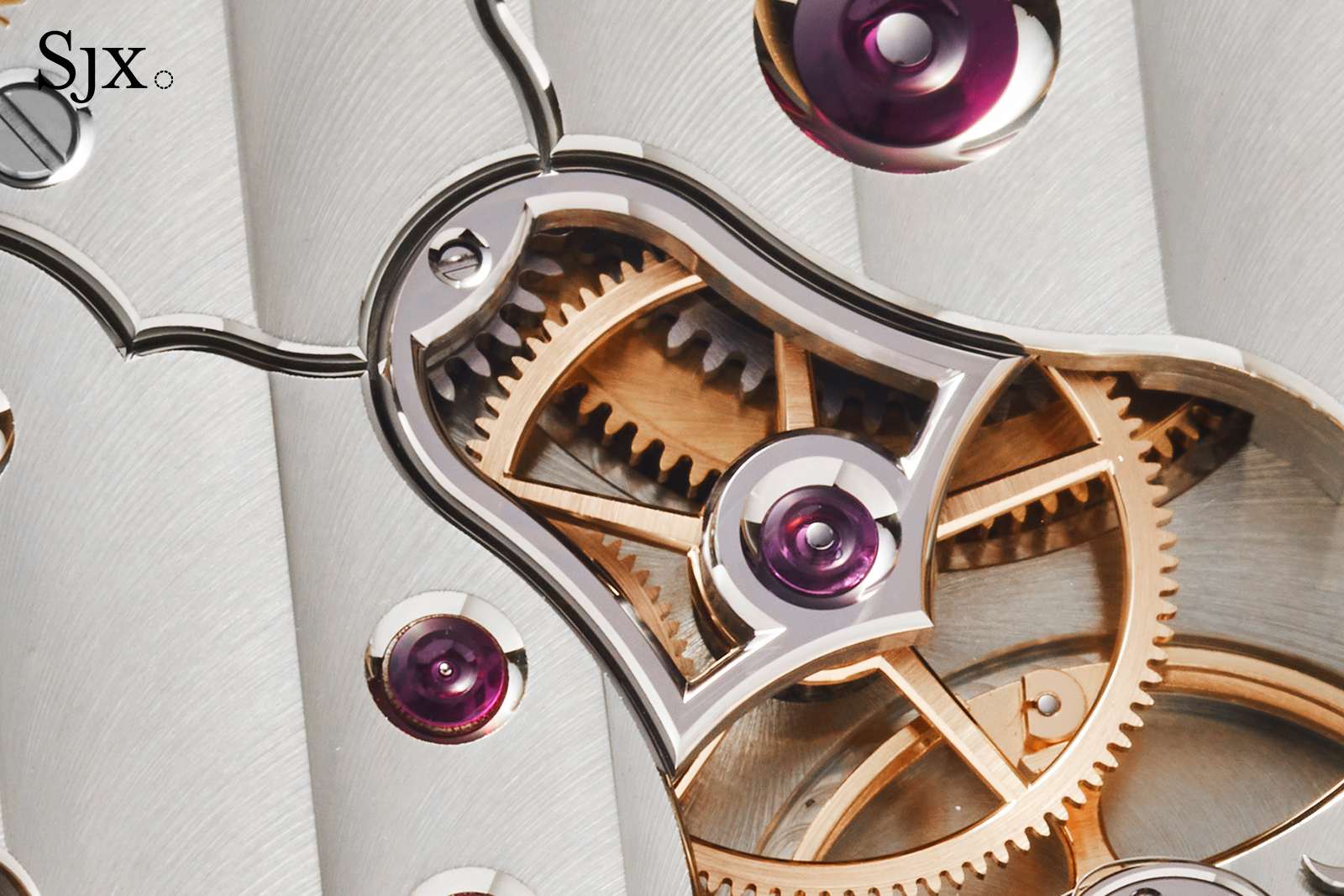
Naturally the decoration is excellent, but that is now par for the course for high-end time-only watches in this segment. Amongst the standout details are the black polished bridge for the pallet lever, and the small but mighty steel cap on the escape wheel cock.
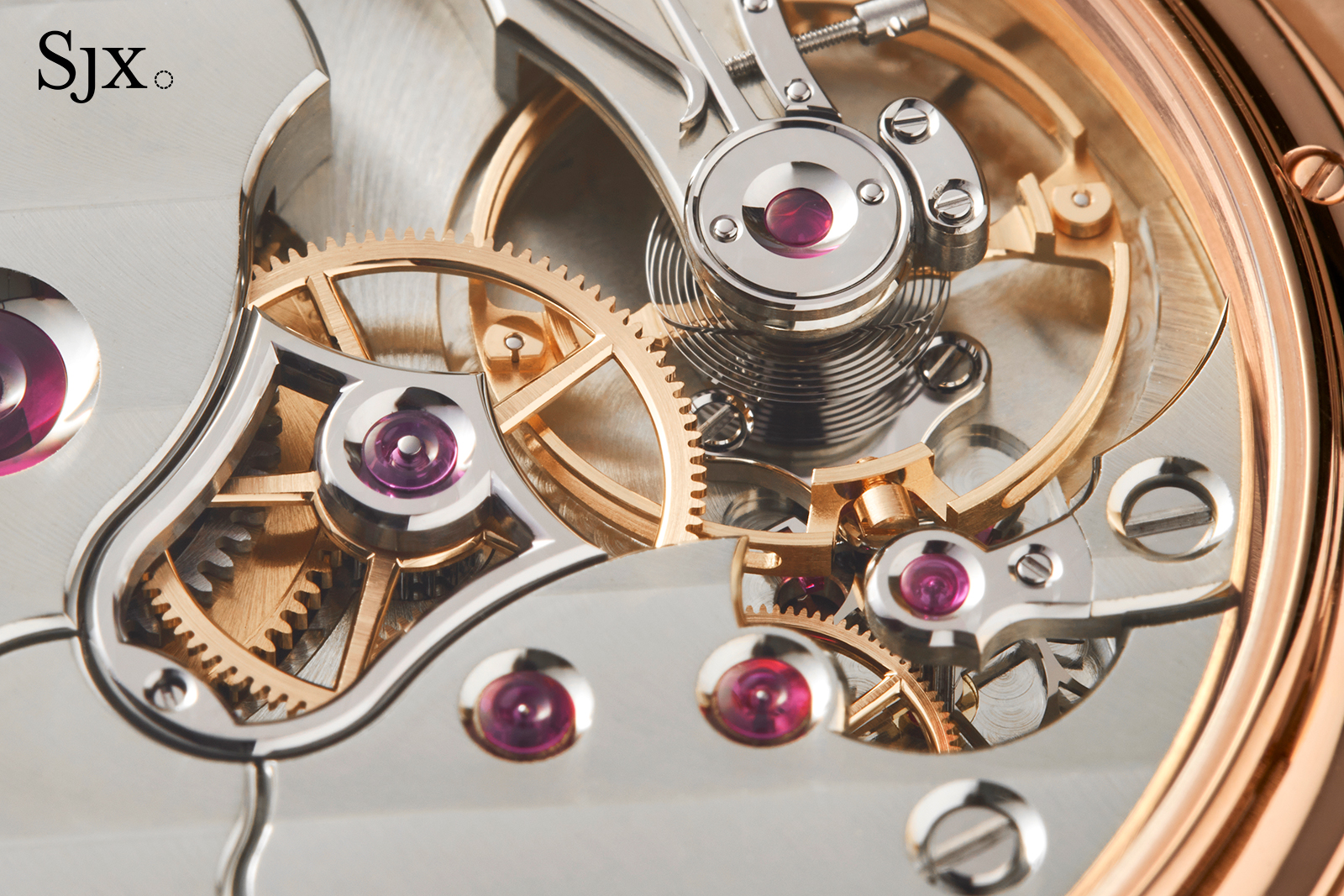
More important is the fact that the decoration is done in-house at Petermann Bedat’s workshop. Gaël assures me the decoration is done the old fashioned way, and I believe him.
The fact that it’s done by the brand itself, and with traditional techniques, sets this apart from many other indies that instead rely on suppliers for decoration, which is evidently a prime selling point for watches like this since finishing is easy to appreciate.
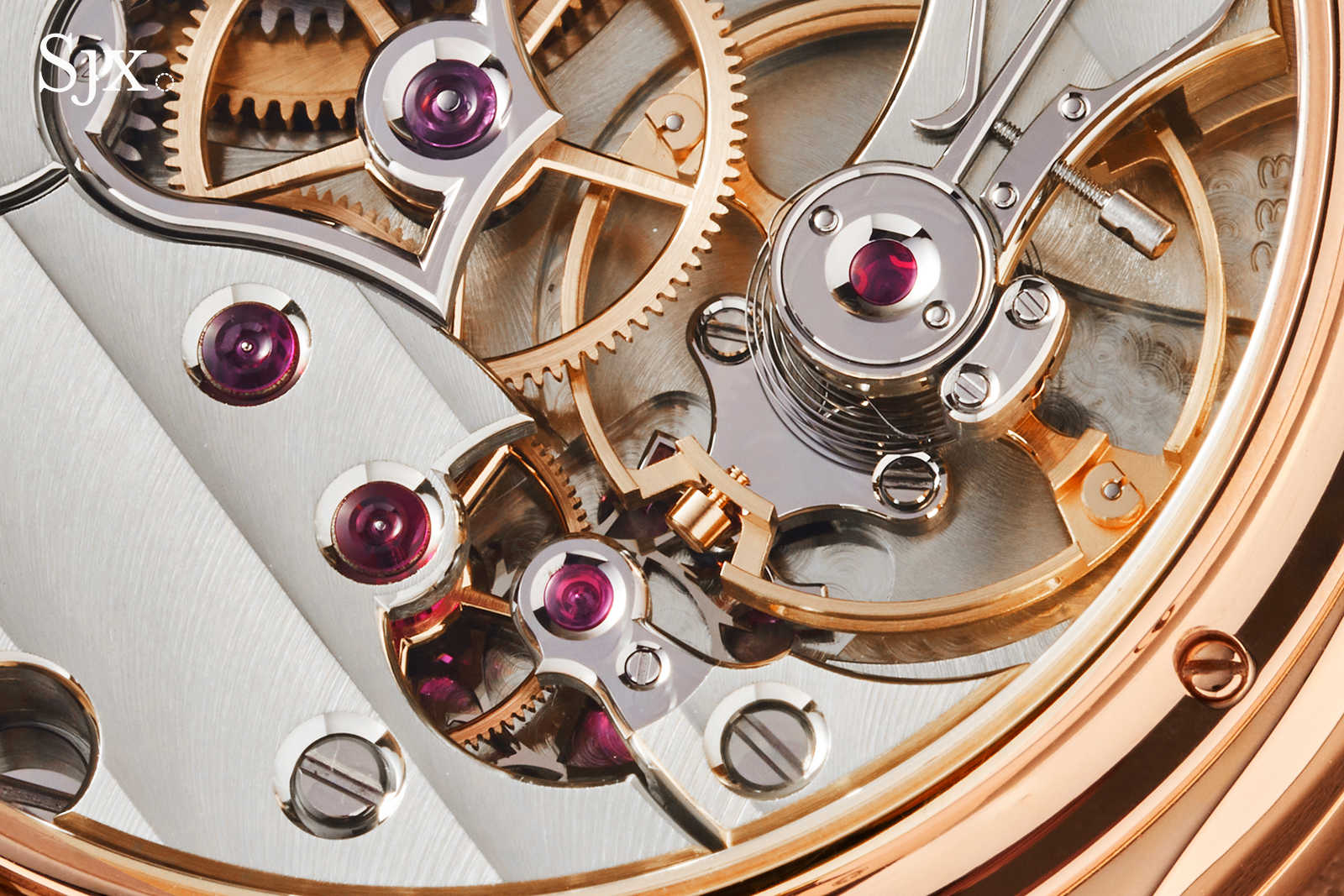
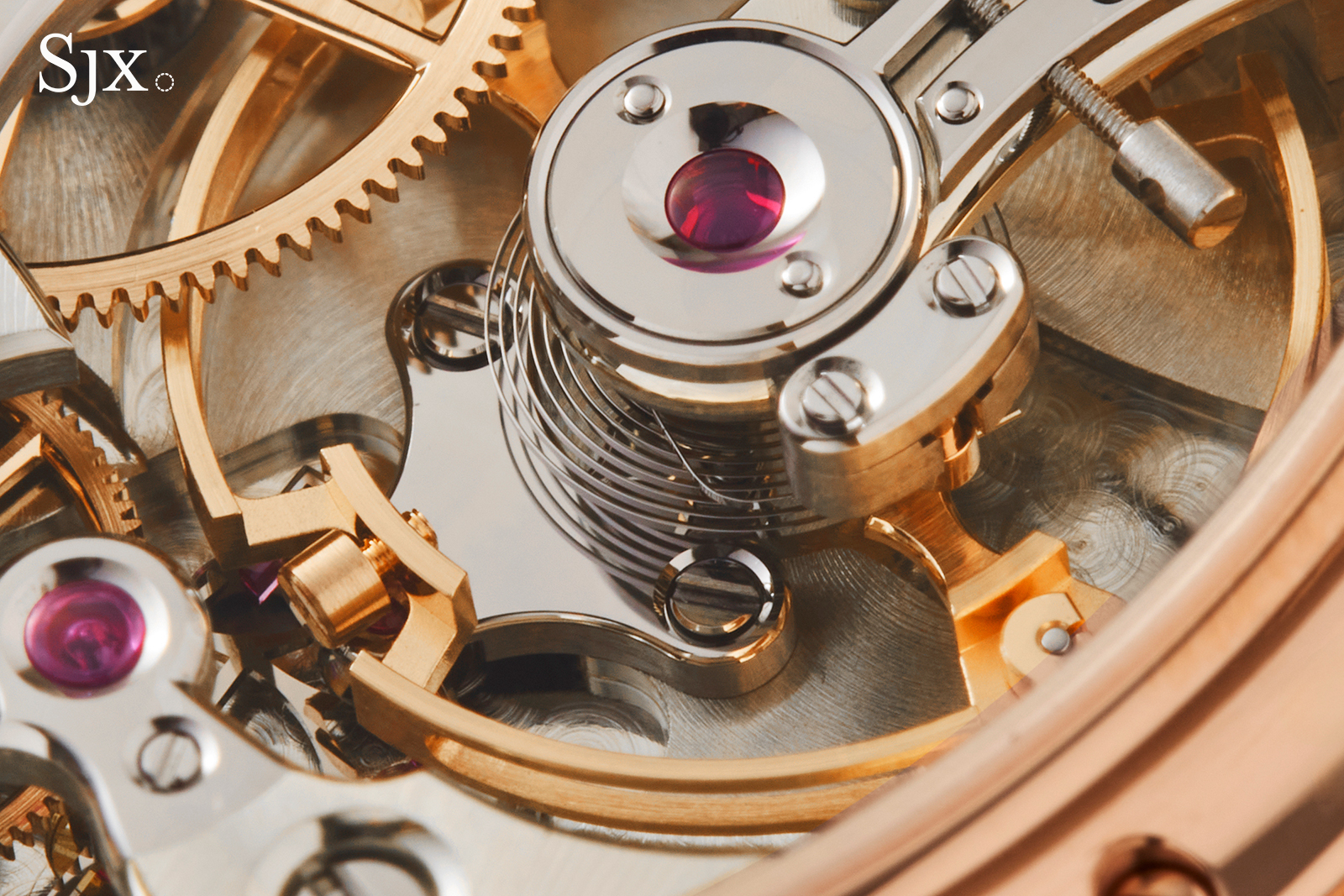
Concluding thoughts
Gael and Florian have done well with the 1825. The execution is clearly top notch across all parts of the watch, though the movement stands out for its original yet classical architecture.
Less fanciful than the competition, the 1825 is more by doing less. The two smartly avoided some of today’s fads in its conception, and the 1825 will arguably have greater longevity because of that.
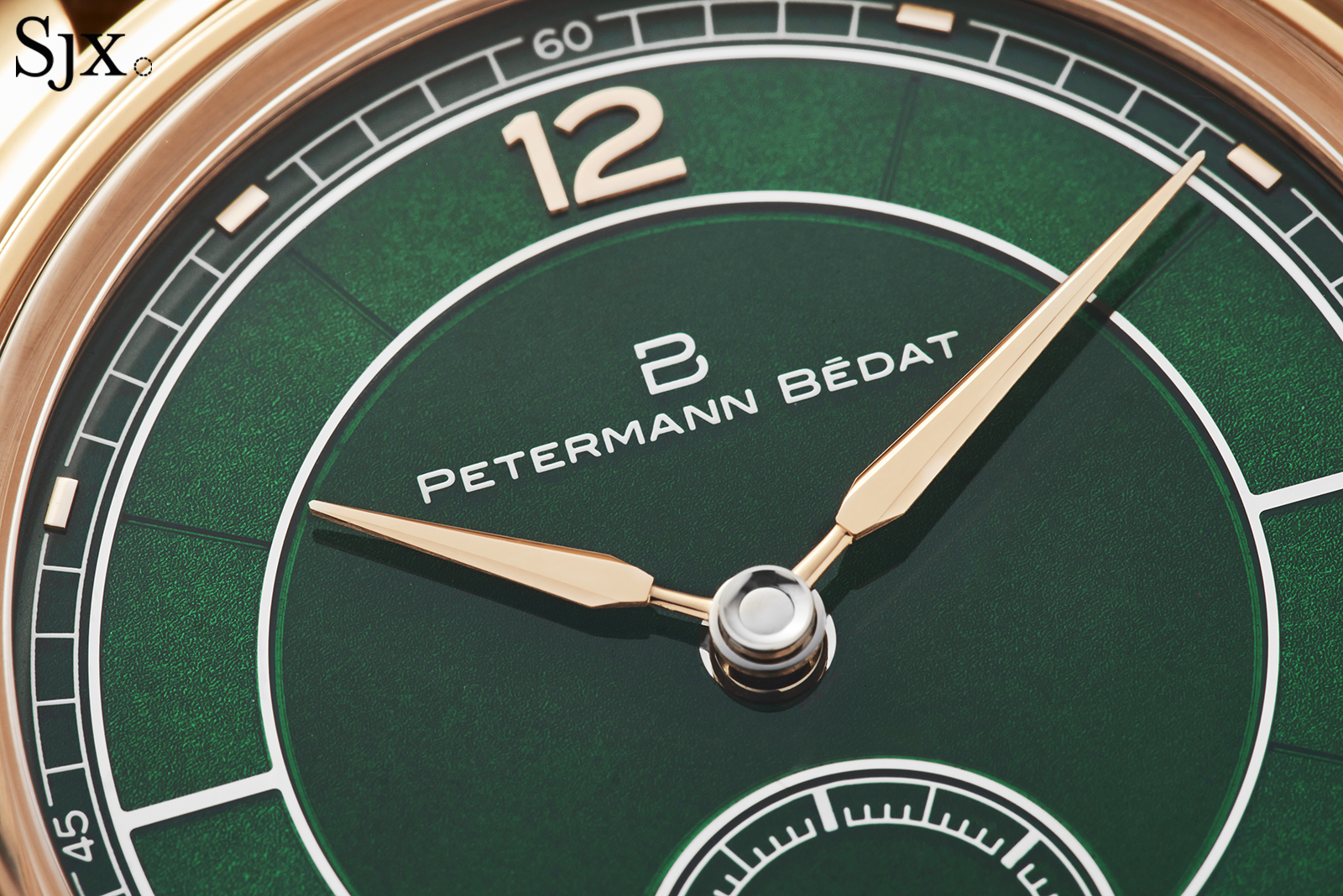
Key facts and price
Petermann Bédat Reference 1825
Ref. 1825
Diameter: 38 mm
Height: 10.15 mm
Material: 18k white or rose gold
Crystal: Sapphire
Water resistance: Unspecified
Movement: Cal. 233
Features: Hours, minutes, and seconds
Frequency: 18,000 beats per hour (2.5 Hz)
Winding: Manual wind
Power reserve: 56 hours
Strap: Alligator leather strap with pin buckle
Limited edition: No but only in production from 2026-2029
Availability: Direct from Petermann Bédat, with delivery starting in fall 2026
Price: CHF75,000 excluding VAT
For more, visit Petermann-bedat.ch.
Back to top.

